The Hasselblad XPan and XPan II were unique 35mm film cameras produced between 1998 and 2002 (XPan) and 2003 to 2006 (XPan II). Whilst they were capable of shooting regular 24mm x 36mm frames on 35mm film, the real party trick was being able to switch to a panoramic mode that shot 24mm x 65mm frames. Essentially using two frames on the 35mm film simultaneously. In this guide, we’re going to take a look at the XPan lenses that made this possible.
Table of Contents
To shoot these wide frames the camera needed dedicated panoramic lenses and three were produced for Hasselblad by Fujifilm. In fact, Fuji also sold the XPan camera themselves, branded as the TX1 and TX2. The lenses were also available with Fuji branding, in a lighter paint colour than the Hasselblad branded versions.
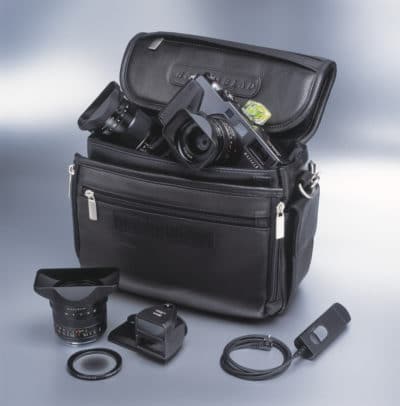
Through the use of the Hasselblad XPan lens adapter, all XPan lenses can also be used on the newer digital X System cameras such as the 907x and the X1DII 50C. Obviously, the sensor in the medium format X System cameras is not panoramic, but when the lenses are mounted to the camera, they are recognised as XPan lenses and the camera crops the display to account for this. On a 50MP sensor, this still leaves you with a roughly 30MP digital panoramic image, so it’s still very useable.
Calculating XPan Lens Equivalent Focal Lengths
Most people are familiar with the field of view that is provided by lenses of a certain focal length when used on 35mm film cameras or full-frame digital cameras. For this reason, it is usual to calculate the equivalent focal length, in 35mm terms, provided by lenses on formats of film or sizes of digital sensors other than 35mm.
Typically this is done by calculating a ‘crop factor’, although this is a term that stems from the use of smaller-than-full-frame APS-C digital sensors, and makes little sense in the particular example we are looking at today. While I’d like to coin the term ‘film factor’ instead, unfortunately, this is a term already in use for a different purpose.
Usually, this factor is calculated from the ratio of the diagonal dimensions of two digital camera sensors, or the dimensions of two types of film. This works well if the two formats you are comparing have sensors or films that use the same aspect ratio. Since we are ultimately comparing to 35mm full-frame, that means an aspect ratio of 3:2.
If the second format that you are comparing to 35mm has an aspect ratio other than 3:2, you can never get a 100% accurate equivalent focal length by using the diagonal dimension for this calculation. Using the diagonal becomes an approximation because, with a different aspect ratio, there cannot ever be a completely equivalent 35mm focal length that matches both the horizontal and vertical angle of view.
Let’s take medium format 645 film for example. The horizontal field of view from a particular 645 lens might be equivalent to a 50mm lens in 35mm full-frame terms, but because of the taller 4:3 frame, the vertical field of view might be equivalent to something like a 55mm lens.
That said, most people will agree that as a rough estimate, you can still use the diagonal sensor or film dimensions when comparing a format that has a 4:3 aspect ratio, with the 3:2 aspect of 35mm full-frame. A couple of mm is neither here nor there if you’re just trying to visualize how wide a lens is.
With panoramic cameras such as the XPan, we have to think more carefully about this. The dramatically different aspect ratio of the Xpan frame means that the best thing we can do is calculate a 35mm equivalent focal length based solely on the horizontal field of view.
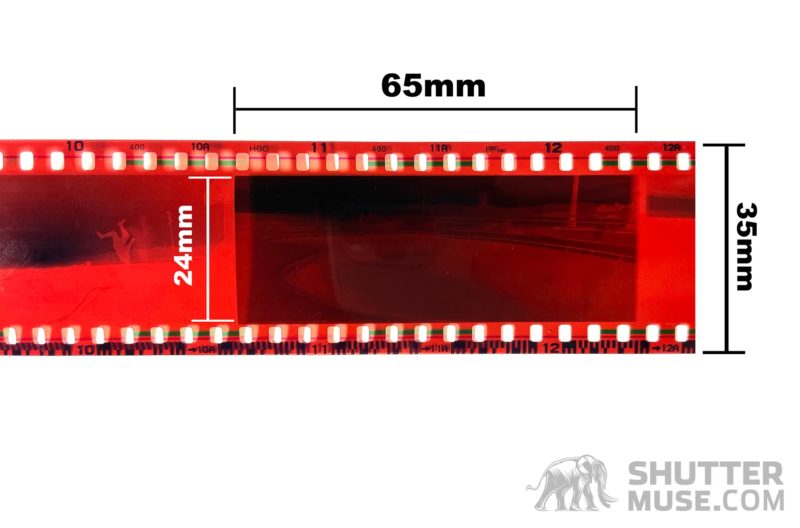
In fact, since the XPan is actually shooting to 35mm film, there is no change in the equivalent vertical field of view compared to a 35mm camera. The XPan 90mm lens, for example, has a vertical field of view that exactly matches the vertical field of view of a 90mm lens on any other 35mm film camera or full-frame digital camera. With the XPan creating an image that is near twice as wide as a 35mm image, though, the horizontal equivalent focal length is dramatically different.
To calculate the XPan’s horizontal equivalent focal length in 35mm terms, we need to know that the image created on the 35mm film by an XPan is 65mm wide, and the image created by a 35mm camera is 36mm wide. 65 divided by 36 is 1.8, so 1.8 is essentially our reverse ‘crop factor’.
This means that the three XPan lenses, 30mm, 45mm and 90mm, have horizontal fields of views that are equivalent to 17mm (30/1.8), 25mm (45/1.8) and 50mm (90/1.8) lenses on a full-frame camera.
If you see anyone else quoting very different equivalent focal lengths to these numbers, they have probably used the diagonal frame dimension to arrive at those numbers. As I mentioned already, for a panoramic frame this does not create an accurate depiction of the situation. What people really want to know with this camera, is how wide the field of view is going to be, compared to lenses they are used to using on a 35mm or full-frame camera.
Hasselblad XPan Lens Specifications
The XPan lenses are no longer manufactured or sold by Hasselblad, so detailed specifications are hard to come by. If you know more information than what is provided in this table, please leave a comment below or shoot me a message using the contact page. The information here was found in an old manual for an XPan camera.
Note that the 30mm lens required the usage of an additional viewfinder mounted on top of the camera. The framelines in the rangerfinder only showed frames for the 45mm and 90mm lenses.
| Hasselblad XPan Lens | Focal Length | Aperture Range | Angle of view (diag/hor)(panorama format) | Length | Weight | Lens Elements | Filter Thread | MFD | Equivalent 35mm Focal Length |
|---|---|---|---|---|---|---|---|---|---|
| XPan 30mm f/5.6 | 30mm | 5.6-22 | 98°/94° | 53mm | 310g | 10 | 58mm | 0.7m | 17mm |
| XPan 45mm f/4 | 45mm | 4-22 | 74°/71° | 47mm | 235g | 8 | 49mm | 0.7m | 25mm |
| XPan 90mm f/4 | 90mm | 4-22 | 42°/40° | 73mm | 365g | 9 | 49mm | 1m | 50mm |

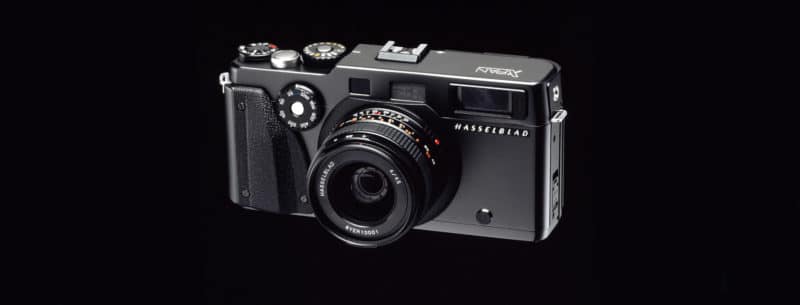
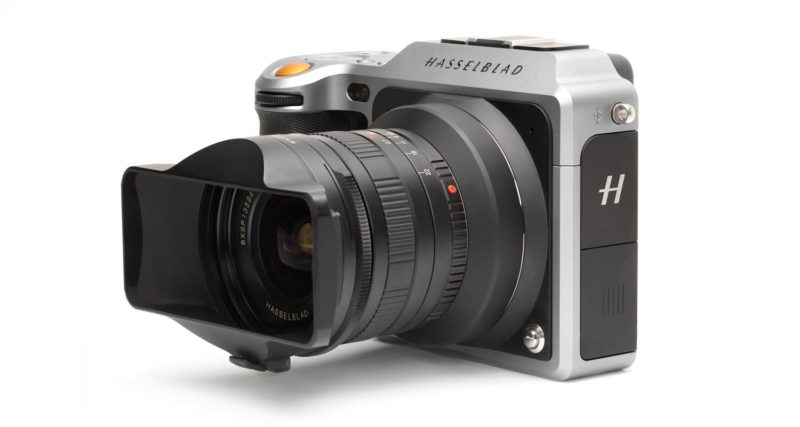


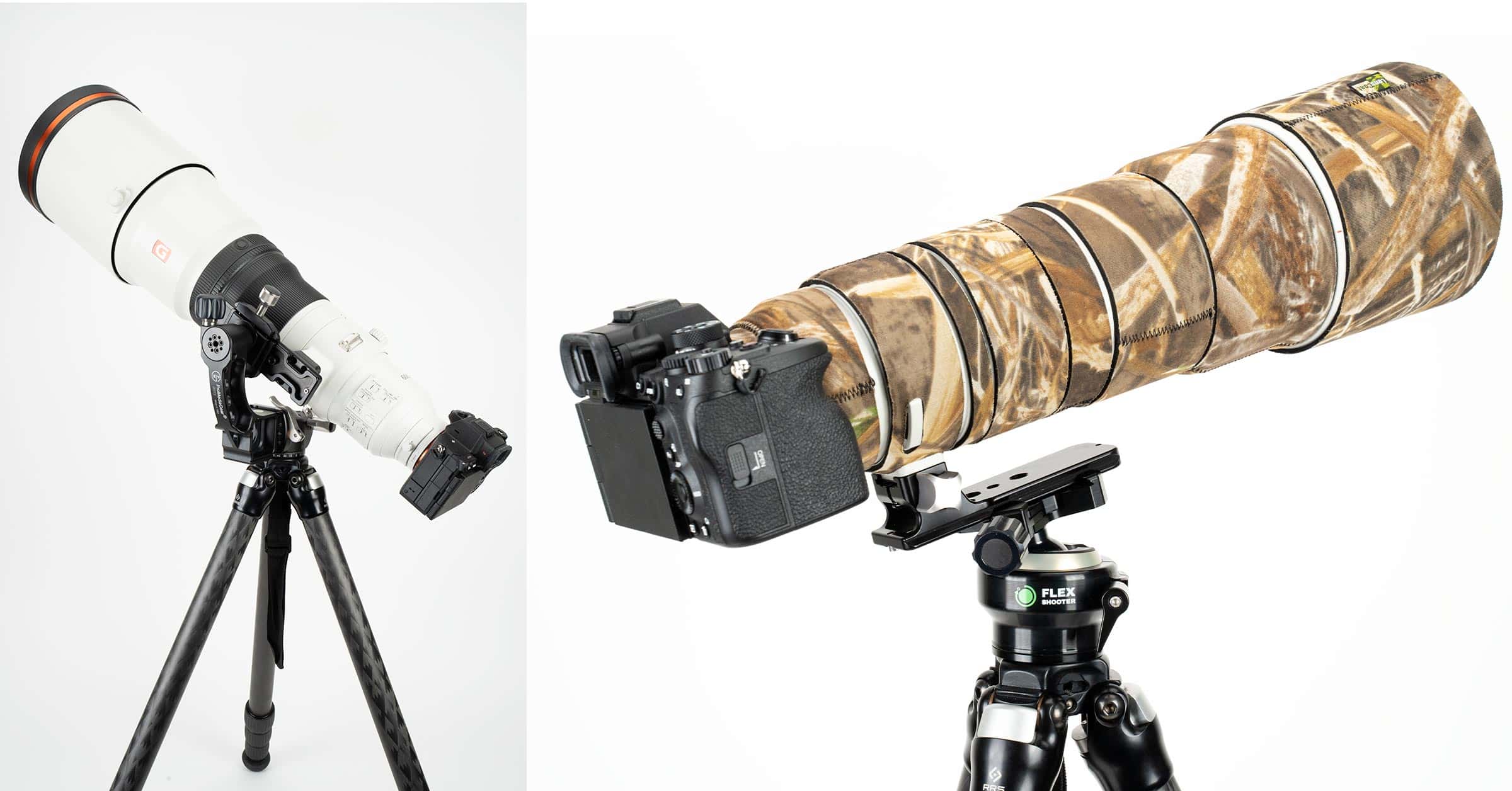
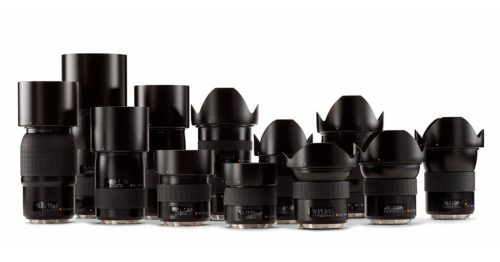
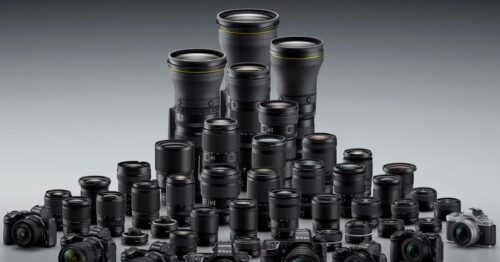
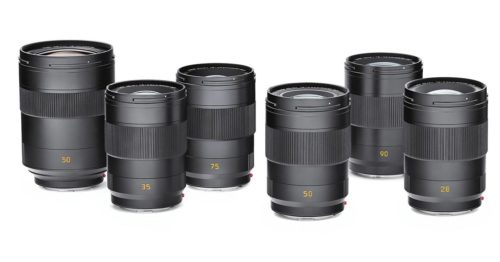


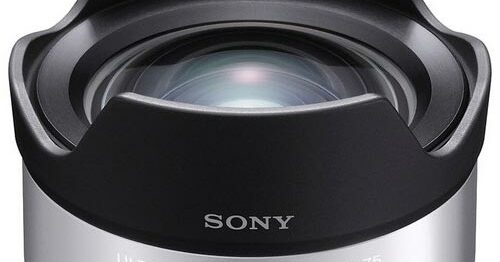
Well done to the author. A great content.
I believe the 35mm equivalence figure for the 45mm lens is listed incorrectly above. It should be 24mm equivalent. (Or some people say closer to 23mm, some say 25mm.)
Since when you google: xpan 45mm equivalent
your page is the number one result on Google, and it prominently displays the figure from your page as the quick answer to the question, it would be good if you could fix it. Thanks.
You are correct, that is a typo. I meant to put 25mm not 35mm. I have corrected it. Thanks for bringing this to my attention.
It has been my understanding that the horizontal “crop factor” of an XPan is close enough to 1.8 that this is the number mostly used. So therefore 45/1.8 is exactly 25mm.
But you got me thinking. Perhaps I should add a section to this page explaining how to arrive at these numbers. I will put an addition to this article on my to-do list.
Thanks again!
UPDATE: This section has now been added to the article.
How does the crop factor change when using x-pan lenses on a digital Hasselblad or Fujifilm- this is 44 x 33 which I guess equates to 44 x 16 in 65:24 mode and is smaller than the film used in an x-pan. Would this change the 1.8 crop factor the other way by 0.67, (16 / 24) therefore changing the equivalent lens from 17/25/50 to 25/37/75?
You’d have to calculate a new crop factor using the x-pan film and digital sensor sizes. This post will help: https://shuttermuse.com/calculate-cameras-crop-factor/
is it possible to adapt/fixe XPAN lenses (ie 45 or 90 mm) on EF or L mount ?
if so :
– will you please quote reference’s adaptators suitable for EF and L mounts?
an other question :
by adaptating thoses XPAN lenses on digital camera (ie : a full frame), will we managed to have a sort of anamorphic’s renders ?
(after cropping I guess)
thanks for your answers
This isn’t possible because you would only have the central portion of the XPan lens view. The Xpan lens projects an image twice the width of a full-frame digital sensor. This means you would have black edges, and after cropping, you would be left with nothing better than the view from any regular lens.
When mounting X-Pan lenses on a Hasselblad X digital camera with the Hasselblad adapter there is no X-Pan lens recognition at all.
The camera has to be set in the menu to electronic shutter.
At that point the image will be a regular 33×44 full sensor format shot.
If a X-Pan image ratio is wished you have to switch it manualy to X-Pan between all format option of the X camera
Thanks for clarifying, Jean-Claude.
No photos of the X-Pan lenses – what am I missing here?
Sorry, I’m not sure why you can’t see the photos.
Dan
First of all, many thanks for this post.
Although a photographer friend of mine has an XPan, I can’t afford one; however, I like mucking about, so I decided to digitally emulate one.
I’m note sure if you will allow me to point to my write up on what I did, but if you do, here is the link: https://photography.grayheron.net/2023/09/digitally-emulating-30mm-hasselblad-xpan.html
Thanks for sharing your interesting post. Sorry that it took me a while to approve the comment. All comments with a link have to be manually approved, and trawling through the spam comments to find the good ones isn’t one of my favorite tasks, so it tends to get left for a while.
Thanks a lot for the invaluable content you are sharing in this particular post.
I wanted to replicate the XPAN look with the gear I have and the current lenses I own, so this was particularly helpful and timesaving in going for the lenses I own closer to the 17/25/50 mm to emulate the original 30/45/90 mm XPAN lenses.
Cheers from Bolivia!